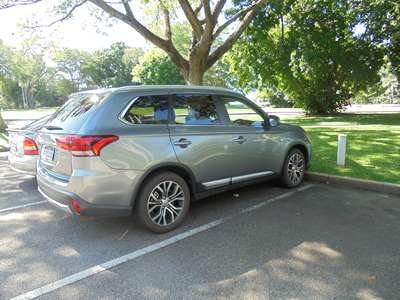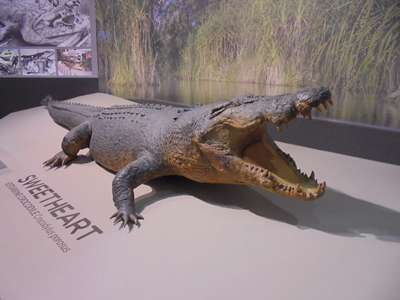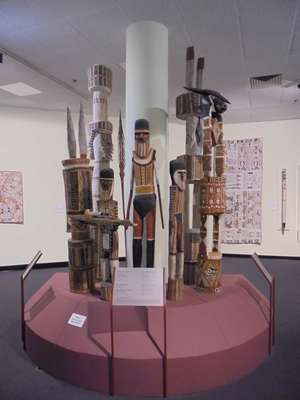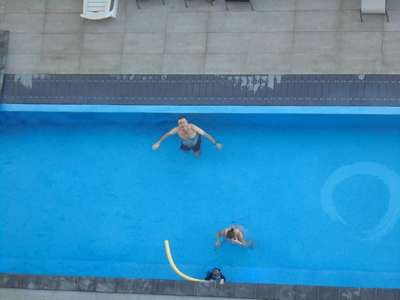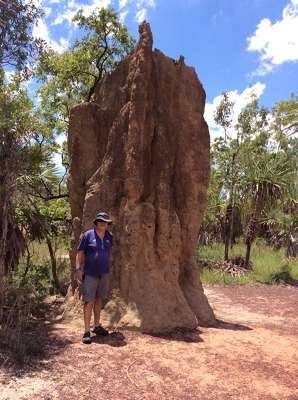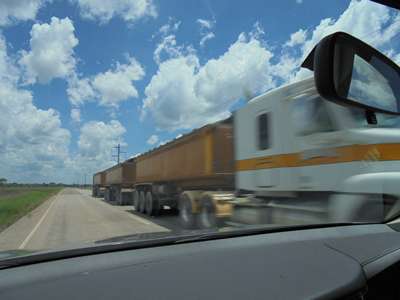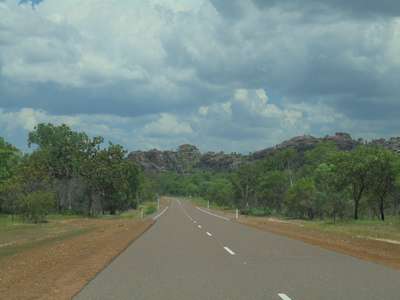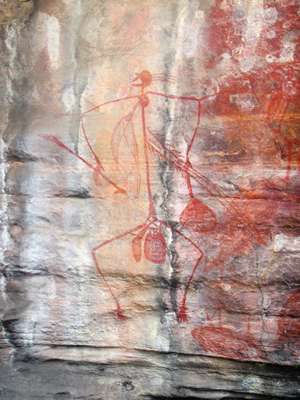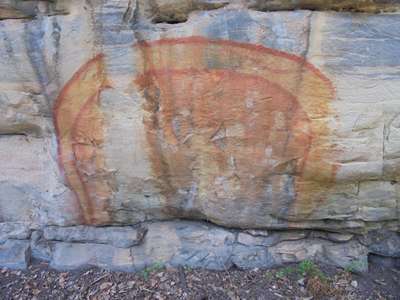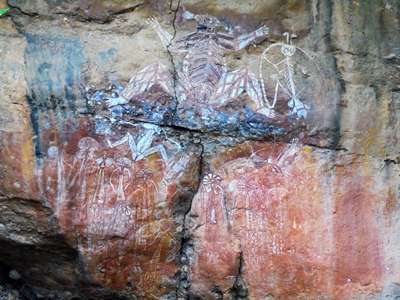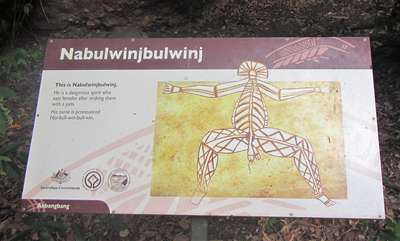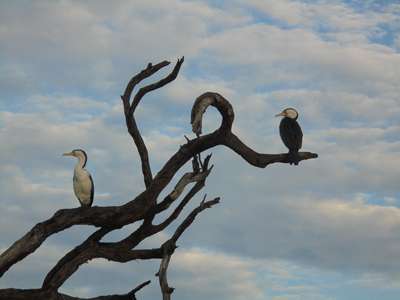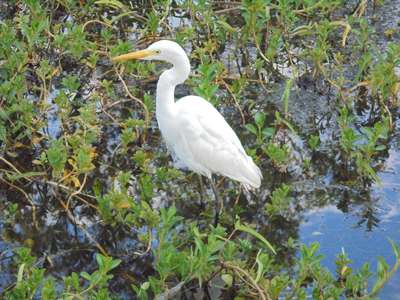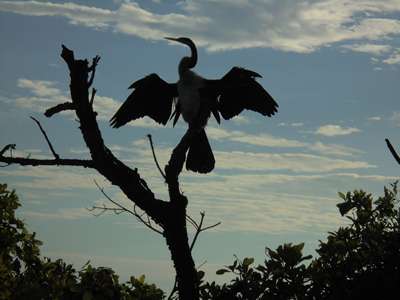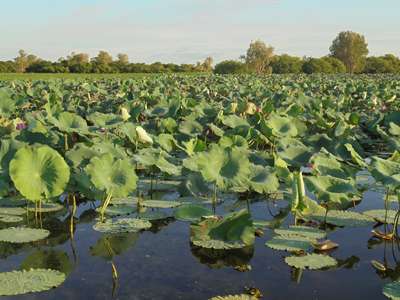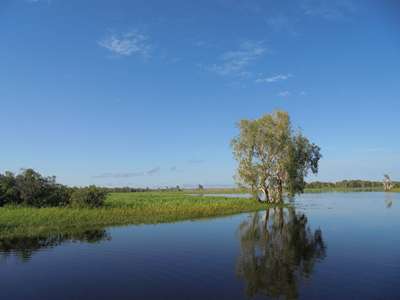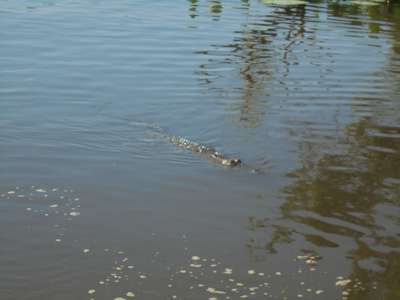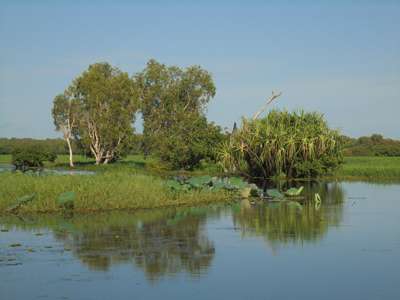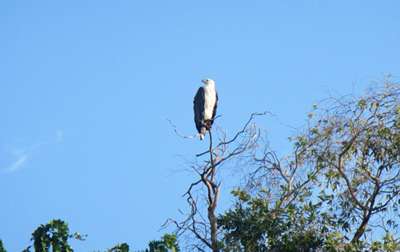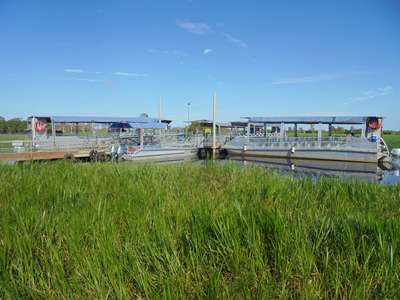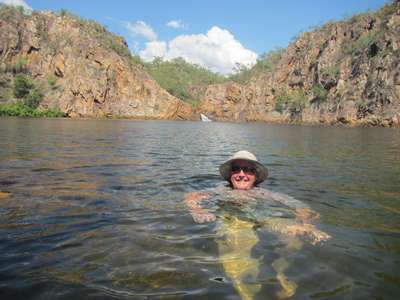The Top End

|
Wednesday 21st December 2016 This whole trip was, without doubt, one of the highlights of
our travels. Definitely a bucket list trip. From the rock art and
crocodiles in Kakadu to the sheer magnificence and beauty of Uluru, it was
jaw-dropping. So glad to have had the opportunity to do it. We picked up our trusty steed – a Mitsubishi Outlander
– from the car park at Darwin airport, where it was VERY HOT!
Quick, check the air con, we’re not having this car if it doesn’t
work... Fortunately it did, very efficiently, which was just as well as I
don’t think I would have survived the heat otherwise! The rest of
the car checked out fine too – more important for this trip than any
other as it would need to cover a lot of miles between here and Alice Springs
with a lot of semi-desert between stops.
Our trusty steed for the next 2,000+ kms. In view of the heat and our limited time in Darwin, we took
a drive around town, making a quick stop at Kathmandu to pick up a
travel pillow for Steve and a long-sleeved shirt for me, and then visited the
Museum and Art Gallery of the Northern Territory where we met Sweetheart, our
first saltwater crocodile. He was 5.1 m long and weighed 780Kg. Sadly for
him, but fortunately for us, he was stuffed.
Sweetheart was named after Sweets Lookout Billabong where
he lived.
An interesting display of 2D & 3D aboriginal art. As we started to adjust to the heat, Steve made use of the
hotel swimming pool, whilst I favoured the air con of the hotel room!
The hotel swimming pool on the 3rd floor, seen
from our balcony on the 12th. We drove 120km south out of Darwin to Litchfield National
Park to see the magnetic termite mounds. We did have to smile...there are
literally thousands, probably millions of termite mounds in this area alone,
and we’d had the boat inspected to make sure we weren’t bringing
any into the country! They were impressive though – this one
towered over Steve!
Almost a work of art! It turns out that neither the termites nor their mounds are
actually magnetic, but the little critters (about 5mm long) were given the name
because of the way they align their mounds in a north-south direction. To
do this they must have some way of sensing the earth’s magnetic
field. By aligning the mound in this way, the sun falls on the eastern
side in the morning and the western side in the afternoon. The termites
migrate to the cooler side of the mound and thus prevent themselves cooking in
the searing heat. Clever little things. No wonder there are so many of
them... We drove a little further into the park to see some falls,
but found the path closed. We followed an alternative path, however, and
found a delightful spot where cool, clear water cascaded down rocks and where
we would have happily stopped for a dip if we had thought to bring our cossies
with us! The next day we were off to Kakadu NP, where our first stop
was 200km away in the South Alligator region of the park. We had our
first experience of road trains which thundered past at top speed on the single
carriageway road, and made a comfort stop along the way at the Wetlands
Information Centre where we got an idea of the range of birdlife in the park.
A road train thundering past. Some were four
“carriages”
long.
Entering the park on sealed, well-maintained roads. Once settled into our room for the night at the Aurora
Kakadu, and after the main heat of the day, we booted and sprayed up and set
off on the Gungarre walk – 3.6km through monsoon forest, woodlands and
along the margins of Anggardabal Billabong, where we hoped to catch sight of
some of the wetland birds we had read about. Alas, the billabong was
little more than a muddy field, the wet season not really having started yet,
and so birdlife was very thin on the ground. Or indeed in the air. Still,
it was good to stretch the legs after the drive, and we were eventually
rewarded by a visit from a magpie goose or two pecking around outside our patio
door back at the hotel! Time to cool off in the pool before dinner. Next day we had a short drive (40km) to the Bowali Visitor
Centre at Jabiru, the main township in the park, where we learned of the local
Aboriginal Dreaming story of how the land was created, and of how the Park
Rangers make sure that certain waterholes are cleared of crocodiles before the
tourist season. After lunch, we set off for the rock art site at Ubirr,
in the East Alligator region. (The regions are named after the branch of
the Alligator River that flows through it.)
Mabuyu represents a story which the Aboriginal elders tell
to teach against stealing.
The Rainbow Serpent is one of the most powerful Ancestors
who played an important role in Creation according to Aboriginal people of NT. The rock art and the stories that they represented were very
interesting at the several sites on our short walk through the outcrops at
Ubirr. I had cause to make first use of my fly screen as the flies tend
to go for the face, presumably after any moisture they can find, as well as the
ears, which I find extremely irritating.
Actually very effective in keeping the flies at a
distance, if a little hot! We returned hot and sweaty to our room at the Kakadu
Crocodile Hotel (actually built in the shape of a crocodile, with a swimming pool
in its belly!) in Jabiru, took cool showers and turned up the air con. Next morning we set off for the Nourlangie Region where we
saw more rock art and an ancient Aboriginal rock shelter.
Nabulwinjbulwinj doesn’t sound like a very nice chap.
A dangerous spirit, he eats females after hitting them on the head with a yam. Then it was on to the Yellow Water Region where we were
booked onto a sunset cruise on the billabong. We checked into our room at
Cooinda Lodge just before the rain started. And boy did it rain,
accompanied by some pretty impressive thunder and lightning which had us
congratulating ourselves on timing our arrival just right! Fortunately it eventually subsided just before we were due
to leave for our billabong trip, but we got a phone call as we were getting
ready to leave to say it was cancelled as it was too dangerous to take the
metal boat out in the storm. Er, but the storm has passed, I said. Still
more to come he said. Too dangerous. Cancelled. Refund.
Oh well, let’s hope they don’t cancel the sunrise trip, as we were
booked on that one too. Luckily they didn’t, and we were picked up at 05:45
and taken down to Yellow Water. We were out in the boat for two hours with
a very informative guide, spotted a variety of birdlife and four crocodiles,
one of which the boat followed into some long reeds where it stuck its head up
out of the water while it crunched up and swallowed its breakfast. It
sounded like a shell cracking, and we decided it must have been a turtle.
The guide talked about bush tucker, and how the changing seasons give the
Aboriginal people different food sources. Very interesting.
Pied
cormorants
Egret
A darter bird drying its
wings.
A buffalo keeping an eye on us from the shore.
Water lily leaves turned towards the
sun.
Peace and tranquillity.
Keep an eye on the water – looks what’s
lurking...
This big boy has a full belly and just looks at the boat.
A comb-crested Jacana seems to walk on water (look
carefully!)
Reflections on flat water.
White-bellied sea
eagle.
Back to base. An excellent trip came to an end too soon, and we were taken
back to the hotel for a full breakfast which we were more than ready for.
Then it was time to bid Kakadu National Park a fond farewell as we set off
along Kakadu Highway towards Katherine. We were sad to have missed Jim
Jim Falls, as the road there was closed and the only way to see them was from
the air. We decided the budget didn’t stretch that far. We took a side trip off the main road about 40km north of
Katherine into the Nitmiluk National Park to see Edith Falls. This time
we had our swimmers with us, and made for the pool at the bottom of the
falls. This didn’t look particularly attractive as the water
wasn’t very clear, so, having seen signs for an upper pool we decided to
follow the path over the bridge and see what the upper pool was like. Big
mistake. It was now early afternoon and the sun was very hot. The
path which initially looked like a gentle slope upwards became steep steps and
then a clamber over rocks, and then the markers seemed to run out. At
least we couldn’t see the next marker, and we were both very hot and
bothered. I was feeling dizzy and a little sick, and had clearly overdone
it in the heat, so we found a shady spot and sat for a while, drinking water
and cooling off as much as we could. Eventually, when I felt a lot
better, we made our way back down again. By the time we arrived back at
the lower pool, it looked a whole lot more inviting! So in we went for a
cooling dip.
Enjoying a cooling dip after a very unwise hike! We left the Top End as we arrived in Katherine, the fourth
largest town in the Northern Territory and 320 km south-east of Darwin in
the late afternoon. We had thoroughly enjoyed the Kakadu NP and were
looking forward to the next leg of the trip – the long drive down
“The Track”, officially the Stuart Highway, which is a single-lane
highway that runs from Darwin to Alice Springs. First stop in the morning
will be the supermarket to stock up on bottled water. We don’t
expect to break down, but it’s best to be prepared... |
